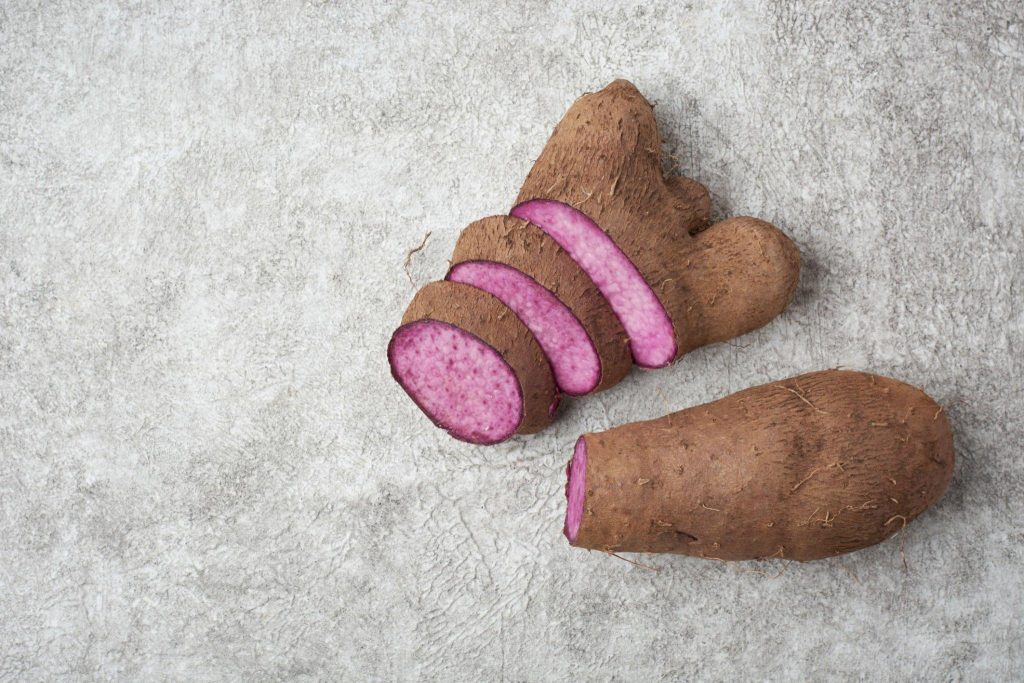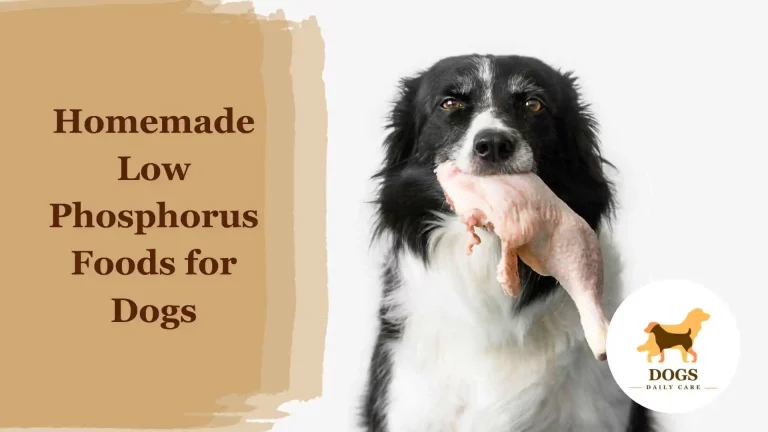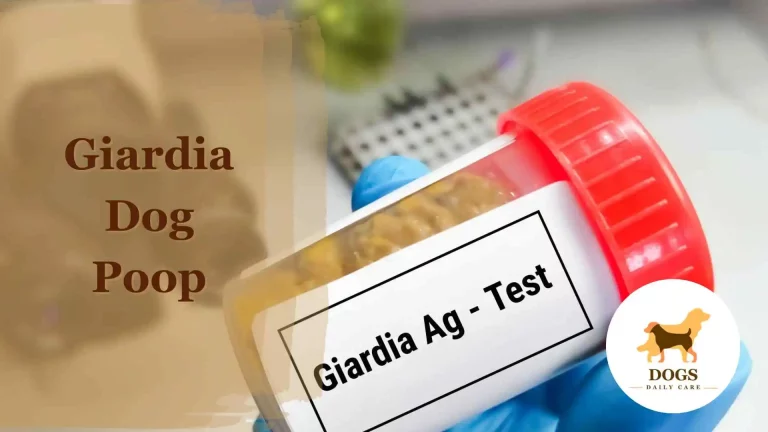Can Dogs Have Ube? – All You Need To Know
Have you ever wondered if your furry friend can enjoy the vibrant, purple goodness of ube? Ube, a unique and colorful yam native to the Philippines, has recently gained popularity in various cuisines and desserts. Its sweet, slightly nutty flavor makes it a tempting treat, but as a responsible pet owner, it’s essential to consider whether it’s safe and beneficial for your dog.
With the rise of creative pet diets and the ever-growing interest in sharing our culinary favorites with our pets, the question “Can dogs have ube?” has become increasingly relevant.
Understanding the implications of introducing new foods to your dog’s diet is crucial. In this blog post, we delve into the world of ube and its potential effects on canine health. We aim to provide you with well-researched, informative insights, ensuring that your decisions are both safe and enjoyable for your beloved pet. So, let’s embark on this journey of discovery together, unraveling the mysteries of ube for our four-legged companions.
What is Ube?
Ube is more than just a pretty face in the world of vegetables. This vibrant purple yam, hailing from the Philippines, is a tropical tuber that’s taking the culinary world by storm. Unlike the regular yams and sweet potatoes you might be familiar with, ube stands out with its deep purple color and unique taste. It’s sweet, with a hint of nuttiness, making it a favorite in desserts and savory dishes alike.

But ube is not just about its eye-catching color and delightful flavor. It’s packed with nutrients too. Rich in vitamins, minerals, and antioxidants, ube is a healthy choice for humans. This naturally leads to the question: Can this nutrient-packed yam be a healthy option for dogs too?
As pet owners increasingly look for natural, wholesome foods to share with their furry friends, understanding what ube is and its nutritional profile becomes essential. So, let’s peel back the layers of this intriguing purple yam and discover its secrets.
Nutritional Benefits of Ube
Ube isn’t just a feast for the eyes; it’s a powerhouse of nutrition too. This purple yam is full of good stuff that can be beneficial for both humans and potentially dogs. First off, ube is rich in carbohydrates. Carbs are energy-givers, and they’re essential for keeping active dogs lively and playful. But that’s not all. Ube is also packed with fiber. Fiber is great for digestion, helping to keep your dog’s tummy happy and healthy.
Then there are the vitamins and minerals. Ube is loaded with Vitamin C, known for boosting immunity, and Vitamin A, which is excellent for maintaining healthy skin and eyes. It also contains a good dose of potassium, which is vital for heart health and proper muscle function. And let’s not forget the antioxidants. These are substances that help fight off harmful elements in the body, keeping your dog’s cells healthy and strong.
Understanding these nutritional benefits, it’s no wonder that pet owners are curious about incorporating ube into their dog’s diet. But it’s not just about what’s inside this purple yam; it’s also about how these nutrients can specifically benefit a dog’s health. So, as we explore the suitability of ube for dogs, let’s keep in mind these nutritious perks that ube brings to the table.
Is Ube Safe for Dogs?
The big question is: Can dogs safely enjoy ube? The short answer is, it’s a bit complicated. While ube is not toxic to dogs, this doesn’t automatically make it a perfect snack for your pet dog. Like any human food introduced to a dog’s diet, caution is key. The natural sugars in ube, while delightful in taste, can be a bit much for dogs if consumed in large quantities. It’s important to remember that dogs process foods differently than humans do.
Another point to consider is how the ube is prepared. Dogs have sensitive digestive systems, so it’s best to avoid ube dishes that contain added sugars, spices, or fats. These additions, common in human ube recipes, can upset a dog’s stomach or lead to more serious health issues. Plain, cooked ube, in small amounts, is a safer bet if you’re considering sharing this purple yam with your pooch.
Before making ube a part of your dog’s diet, it’s always a good idea to consult with your vet. Every dog is unique, and what works for one might not be suitable for another. By seeking professional advice, you can ensure that your decision to include ube is both safe and beneficial for your canine companion.
How to Safely Introduce Ube to Your Dog’s Diet
Introducing ube to your dog’s diet can be a fun experiment, but it’s important to do it safely. The key is to start small. Think of it as a taste test rather than a full meal. Begin with a tiny piece of plain, cooked ube. This means no added sugars, spices, or fats – just the ube in its natural form. Watch how your dog reacts. If they enjoy it and show no adverse reactions, you can gradually increase the amount over time.
Monitoring your dog’s response is crucial. After your dog tries ube for the first time, keep an eye out for any signs of digestive upset, such as diarrhea or vomiting. If you notice anything unusual, it’s best to stop and consult your veterinarian. Remember, every dog is different, and what’s harmless for one might be problematic for another.
It’s also important to consider the role of ube in your dog’s overall diet. Ube should only be a small part of their diet, not a main course. Dogs need a balanced diet, and treats like ube should not make up more than 10% of their daily food intake. By sticking to this guideline, you can ensure that your dog enjoys this new treat without compromising their nutritional needs.
Last but not least, always prioritize your dog’s regular diet. Ube can be a nice occasional treat, but it should never replace the balanced, complete nutrition that your dog gets from their regular dog food. With these simple steps, you can safely introduce ube into your dog’s life, adding a little bit of color and variety to their treats.
Potential Risks and Side Effects
While ube can be a tasty treat for dogs, it’s important to be aware of potential risks and side effects. The biggest concern is the natural sugar content in ube. Dogs don’t need much sugar in their diets, and too much can lead to weight gain or even diabetes. So, when it comes to ube, a little goes a long way. Remember, moderation is key to keeping your dog healthy and happy.

Another risk to consider is allergic reactions. Just like people, dogs can have allergies to certain foods. If you’re introducing ube for the first time, watch for signs of allergies, such as itching, swelling, or difficulty breathing. If you notice any of these symptoms, stop feeding ube immediately and consult your vet.
Digestive issues are also a possibility. Some dogs might experience an upset stomach, diarrhea, or vomiting after eating ube. This is especially true if they eat too much or if the ube is prepared with ingredients that aren’t dog-friendly. Stick to plain, cooked ube and always start with a small amount to minimize the risk of digestive problems.
Lastly, remember that each dog is unique. What’s safe for one dog might not be safe for another, especially if your dog has specific health conditions or dietary restrictions. Always consider your dog’s individual health and consult with a vet before adding new foods to their diet. By being cautious and informed, you can make the best choices for your dog’s health and wellbeing.
Veterinarian’s Advice
When it comes to your dog’s diet, there’s no better source of advice than your veterinarian. They know your pet’s health history and can give personalized advice. If you’re thinking about adding ube to your dog’s diet, a quick chat with your vet is a great idea. They can guide you on the right amount and frequency, considering your dog’s size, age, and overall health.
Your vet can also warn you about any potential risks specific to your dog. For example, if your dog has a history of diabetes or weight problems, your vet might advise against foods high in natural sugars like ube. They can also help you understand signs of allergic reactions or digestive issues, so you know what to watch out for.
It’s also a chance to learn more about your dog’s nutritional needs. Vets can offer insights into what makes a balanced diet for your pet, helping you make informed choices about all types of treats and supplements, not just ube. This information is invaluable for keeping your dog healthy and happy.
Remember, every dog is unique. What works for one might not work for another. Regular check-ups and discussions with your vet ensure that your dog’s diet is tailored to their specific needs, keeping them in the best possible health.
Frequently Asked Questions (FAQs)
Q1. Can dogs eat ube regularly?
While ube isn’t harmful to dogs, it’s best enjoyed as an occasional treat rather than a regular part of their diet. Dogs thrive on balanced, consistent nutrition, and treats like ube should be given in moderation.
Q2. How much ube can I safely give my dog?
Start with a small piece of plain, cooked ube to see how your dog reacts. If there are no adverse reactions, you can offer a little bit more next time. Remember, treats should not make up more than 10% of your dog’s daily food intake.
Q3. Are there any specific ways to prepare ube for dogs?
The safest way to prepare ube for dogs is to cook it plainly, without any added sugars, salts, spices, or fats. Mashed or pureed ube can be easier for them to digest.
Q4. Can puppies eat ube?
Puppies have more sensitive digestive systems, so it’s generally advisable to avoid giving them ube. If you do choose to introduce it, wait until they are older and do so very gradually, monitoring for any signs of digestive distress.
Q5. What should I do if my dog has a bad reaction to ube?
If your dog shows any signs of an allergic reaction or digestive upset after eating ube, stop feeding it immediately and consult your veterinarian. Symptoms to watch for include itching, swelling, vomiting, or diarrhea.
Conclusion
In conclusion, while ube can be a delightful and nutritious treat for your dog, it’s essential to approach it with caution. This beautiful purple yam offers some health benefits thanks to its vitamins and antioxidants, but like any human food, it’s not a one-size-fits-all solution for every canine.
Moderation is key, and being mindful of how your dog reacts to this new addition to their diet is crucial. Whether ube is a hit or a miss with your furry friend, always prioritize a balanced diet and regular veterinary advice to maintain their health and happiness.
Remember, every dog is unique, and their dietary needs can vary greatly. Consulting with your veterinarian before introducing any new food, including ube, ensures you’re making the best decision for your pet’s specific needs. By doing so, you can enjoy the fun of sharing new foods like ube with your dog, while also keeping their wellbeing at the forefront.
So, the next time you’re enjoying some ube and wondering if you can share it with your four-legged companion, think back to the key points from this post to make a safe and informed choice.







